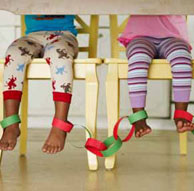How to be a ventriloquist
Puppet play is a great way to fire a child's imagination. Ventriloquist's dummies hold particular fascination for children because traditionally the dummy says all the naughty, rude things that the puppeteer cannot. Here's some tips on how to be a ventriloquist.
What you need:
- A doll, soft toy or your own homemade ventriloquist's dummy
Number of players:
1+
Activity:
Get your child to 'sit' the dummy on her lap. If it is a doll or soft toy, make sure it has a jumper or top on. Your child should put her hand up the back of the jumper to hold onto the head and swivel it around.
Make sure the dummy's voice is very different from the puppeteer's. Give it a higher or lower pitch, an accent or something that distinguishes it really clearly.
When the dummy talks, move its head so the audience's attention is drawn to the dummy and away from the puppeteer.
The puppeteer's mouth should be relaxed, not clenched as is usually assumed. Lips and teeth should be gently parted.
The tongue works very hard: place it in different positions on the palate and teeth. It's surprising how much you can achieve without actually moving your lips.
Practise makes perfect. Get your child to stand in front of the mirror and watch her own mouth as she tries to say the letters of the alphabet without moving her lips.
The most difficult letters are: B, F, P, V, W. So whenever possible, your child should try to avoid words with those letters. For example: instead of saying, "Hello boys and girls," say, "Hello children." "Bye Bye," could be "Ta-tah."
Work out a script with your child that avoids most of the hardest sounds. For older children, you could write it down.
Notes
- Children love repetition, so once they''ve worked out the perfect show, be prepared to watch it over and over and OVER again!







Leave A Comment
You must be logged in to post a comment.